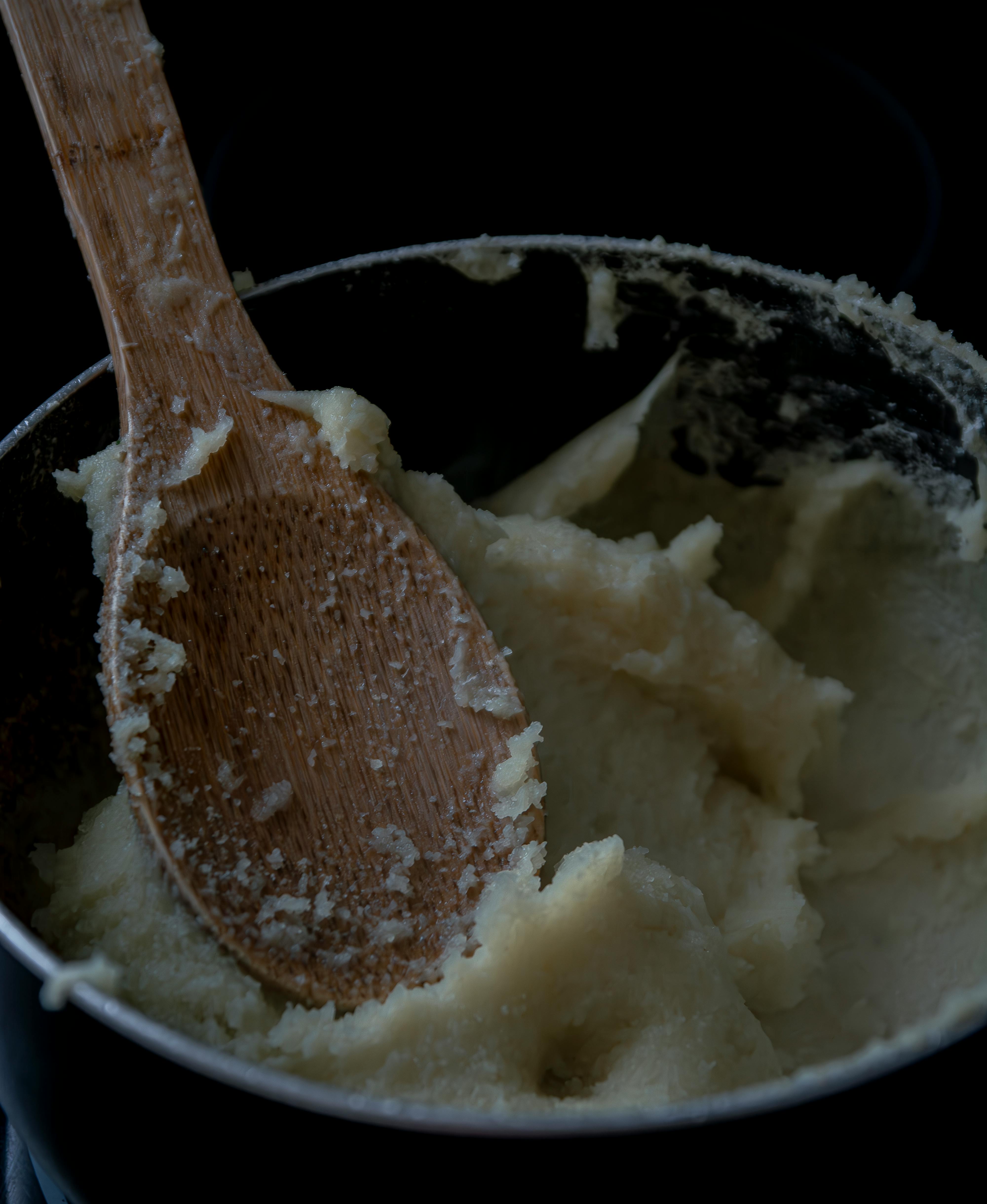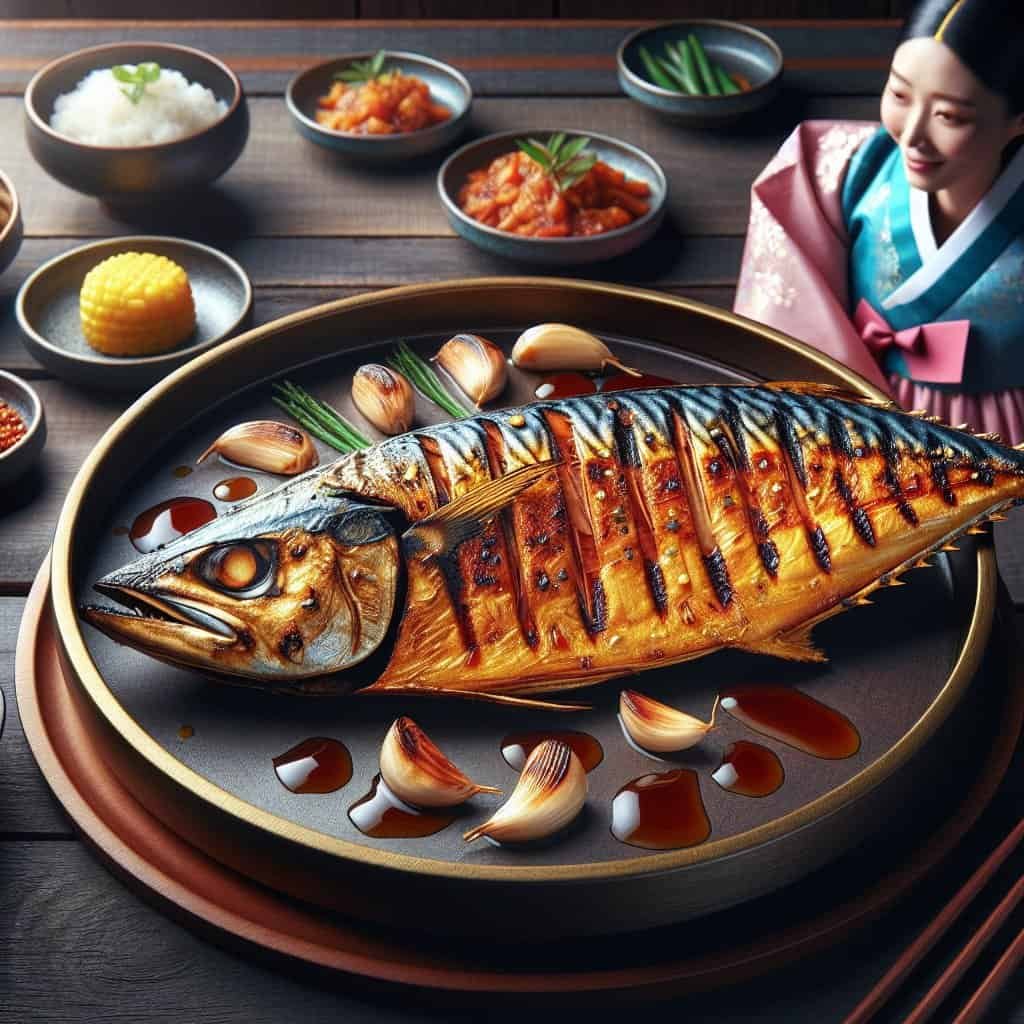Imagine a sizzling hot summer day in South Korea, with the vibrant streets bustling with energy and the aroma of delicious food wafting through the air. One dish that stands out among the rest is the mouthwatering traditional Korean grilled mackerel, known as godeungeo gui. This delightful meal is prepared by marinating the mackerel in a flavorful blend of soy sauce, sesame oil, garlic, and ginger before grilling it to perfection. Once cooked, the juicy fish is enjoyed with a variety of side dishes such as kimchi and rice, creating a truly satisfying and unforgettable dining experience. Let’s explore the preparation and enjoyment of this traditional Korean delicacy that will leave you craving for more.

Preparation of Traditional Korean Grilled Mackerel (Godeungeo Gui)
Selecting the Fresh Mackerel
When preparing traditional Korean grilled mackerel, the first step is to carefully select fresh mackerel from the market. Look for mackerel that has clear, bright eyes and shiny skin. You want the fish to be firm and have a fresh scent. Freshness is crucial to ensuring the best flavor and texture in your grilled mackerel dish.
Cleaning and Gutting the Mackerel
Once you have chosen the perfect mackerel, it’s time to clean and gut it. Using a sharp knife, make an incision along the stomach of the fish and carefully remove the internal organs. Rinse the mackerel thoroughly under cold water to remove any remaining blood or impurities. Pat it dry with a paper towel to ensure a crispy grilled skin.
Marinating the Mackerel
Marinating the mackerel is the key to infusing it with delicious flavors. In a bowl, mix together soy sauce, sesame oil, minced garlic, and grated ginger. You can adjust the quantities to suit your taste preferences. Place the cleaned mackerel in a shallow dish and pour the marinade over it, making sure to coat both sides of the fish. Allow the mackerel to marinate for at least 30 minutes to allow the flavors to penetrate the flesh.
Grilling the Mackerel
Once the mackerel has finished marinating, it’s time to fire up the grill. Preheat the grill to medium-high heat and lightly oil the grates to prevent sticking. Place the marinated mackerel on the grill, skin-side down. Grill for about 3-4 minutes on each side, or until the fish is cooked through and the skin is crispy. Keep an eye on the fish to prevent it from overcooking. Once done, remove the mackerel from the grill and let it rest for a few minutes before serving.
Traditional Ingredients and Seasonings Used
Soy Sauce
Soy sauce is a staple in Korean cuisine and plays a vital role in the marinade for grilled mackerel. It adds a savory and slightly salty flavor to the dish, enhancing the taste of the fish.
Sesame Oil
Sesame oil is another crucial ingredient used in the marinade for grilled mackerel. It provides a distinct nutty aroma and flavor, giving the dish a delightful depth.
Garlic
Garlic, with its pungent and savory taste, adds a delicious kick to the marinade. It also complements the natural flavors of the mackerel, making it even more enjoyable.
Ginger
Ginger adds a refreshing and slightly spicy flavor to the marinade. It helps balance the richness of the fish and adds a unique element to the overall taste profile.

Side Dishes Served with Godeungeo Gui
Kimchi
No Korean meal is complete without kimchi. Made from fermented vegetables, such as cabbage or radishes, kimchi adds a spicy and tangy element to the grilled mackerel. The combination of the smoky fish and the complex flavors of kimchi creates a harmonious and satisfying dining experience.
Banchan (Assorted side dishes)
In addition to kimchi, traditional Korean grilled mackerel is often served with an array of banchan, which are small side dishes. These can include pickled vegetables, seasoned seaweed, bean sprouts, and more. Banchan adds variety to the meal, allowing you to explore different flavors and textures while enjoying the mackerel.
Steamed Rice
Steamed rice is a staple in Korean cuisine and pairs perfectly with grilled mackerel. The fluffy, slightly sticky rice balances out the flavors of the dish and provides a satisfying base for the meal. Don’t forget to enjoy the fish with a spoonful of rice for a complete culinary experience.
Enjoyment of Godeungeo Gui
Eating Godeungeo Gui with a Group
In Korean culture, sharing a meal with others is a common practice. Gather your family and friends around the table to enjoy the grilled mackerel together. The communal dining experience adds to the enjoyment as you can savor the flavors and engage in lively conversations.
Using Chopsticks and a Spoon
When it comes to eating traditional Korean grilled mackerel, it is common to use chopsticks to pick up the fish and side dishes. A spoon is also used to scoop up rice and soup. Embrace the traditional dining etiquette and try your hand at using chopsticks to fully immerse yourself in the Korean culinary experience.
Pairing with Traditional Korean Alcoholic Beverages
For an authentic Korean dining experience, consider pairing your grilled mackerel with traditional Korean alcoholic beverages such as Soju or Makgeolli. Soju is a clear distilled liquor with a smooth taste, while Makgeolli is a milky rice wine with a slightly sweet and fizzy flavor. These traditional drinks complement the flavors of the mackerel and enhance the overall dining experience.

Regional Variations of Godeungeo Gui
Jeju Godeungeo Gui
Jeju, a beautiful island off the southern coast of South Korea, is known for its unique spin on grilled mackerel. Jeju Godeungeo Gui is characterized by a marinade made with citrus fruits like Jeju orange or tangerine, which adds a refreshing and tangy twist to the dish. The use of local Jeju ingredients makes this variation a must-try for anyone visiting the island.
Busan Godeungeo Gui
Busan, a bustling port city in South Korea, has its own take on grilled mackerel. Busan Godeungeo Gui is known for its generous use of spicy seasonings, such as gochujang (Korean red pepper paste), which adds a fiery kick to the dish. If you enjoy a bit of heat in your food, this regional variation will definitely satisfy your taste buds.
Health Benefits of Godeungeo Gui
High Nutritional Content
Traditional Korean grilled mackerel is not only a delicious dish but also a nutritious one. Mackerel is packed with essential vitamins and minerals, including vitamin D, vitamin B12, selenium, and omega-3 fatty acids. These nutrients provide numerous health benefits, such as supporting heart health, boosting immune function, and promoting overall well-being.
Rich in Omega-3 Fatty Acids
Mackerel is one of the best sources of omega-3 fatty acids, which are essential for brain and heart health. Regular consumption of grilled mackerel can help reduce the risk of heart disease, lower inflammation in the body, and support cognitive function.
Boosts Brain Function
The omega-3 fatty acids found in mackerel have been shown to have a positive impact on brain health. They can improve cognitive function, memory, and overall brain performance. Incorporating grilled mackerel into your diet can be beneficial for maintaining optimal brain health.

History and Cultural Significance
Historical Origins
Korean grilled mackerel, known as Godeungeo Gui, has been enjoyed for centuries in Korea. The grilling technique was developed as a way to preserve fish and create a delicious and flavorful dish. The tradition of grilling mackerel has been passed down through generations, becoming an integral part of Korean culinary heritage.
Role in Korean Cuisine
Godeungeo Gui holds a special place in Korean cuisine. It is considered a classic dish and is often enjoyed on special occasions or as a part of festive meals. The smoky and savory flavors of grilled mackerel embody the essence of Korean cooking, highlighting the importance of simple, yet delicious ingredients.
Tips for Cooking Godeungeo Gui at Home
Temperature and Timing
To achieve the perfect grilled mackerel, it’s important to get the temperature and timing right. Preheat your grill to medium-high heat and make sure the grates are well-oiled to prevent sticking. Cook the mackerel for approximately 3-4 minutes on each side, or until it is cooked through and the skin is crispy. Be mindful not to overcook the fish, as it can result in dry and tough meat.
Grilling Techniques
When grilling mackerel, it’s important to handle the fish with care to prevent it from falling apart. Use a fish basket or grill mat to keep the mackerel intact. Alternatively, you can also wrap the fish in aluminum foil before placing it on the grill. This will help to retain the moisture and prevent sticking.
Serving Suggestions
When serving grilled mackerel, consider garnishing it with chopped green onions, sesame seeds, or a squeeze of fresh lemon or lime juice for an extra burst of flavor. You can also add a side of dipping sauce, such as ssamjang (a spicy soybean paste), to further enhance the taste. Serve the mackerel alongside steamed rice and a variety of banchan for a truly authentic Korean dining experience.

Frequently Asked Questions (FAQs)
Can I use a different type of fish for Godeungeo Gui?
While mackerel is the traditional choice for Godeungeo Gui, you can experiment with other types of fish as well. Opt for oily fish with firm flesh, such as saba (mackerel), salmon, or trout, for the best results. The marinade and grilling techniques can be adjusted to suit different fish varieties.
Can I substitute the marinade ingredients?
Yes, you can adjust the marinade ingredients according to your taste preferences. Feel free to experiment with different seasonings, such as adding a touch of honey for sweetness or a splash of rice vinegar for acidity. However, keep in mind that traditional Korean grilled mackerel gets its distinct flavor from the combination of soy sauce, sesame oil, garlic, and ginger.
How long does it take to grill the mackerel?
The grilling time for mackerel can vary depending on the thickness of the fish and the heat of the grill. In general, it takes approximately 3-4 minutes on each side for the mackerel to be cooked through. However, it is advisable to keep a close eye on the fish to prevent overcooking. The skin should be crispy, and the flesh should be opaque and flake easily when done.
Conclusion
Traditional Korean grilled mackerel, or Godeungeo Gui, is a flavorful and nutritious dish that holds significance in Korean cuisine. The preparation of this dish involves selecting fresh mackerel, cleaning and gutting it, marinating it in a mixture of soy sauce, sesame oil, garlic, and ginger, and grilling it to crispy perfection. When enjoying Godeungeo Gui, it is common to serve it with kimchi, banchan, and steamed rice, while using chopsticks and a spoon for a truly authentic experience. This delicious dish not only offers a delightful culinary experience but also provides numerous health benefits, such as high nutritional content and brain-boosting omega-3 fatty acids. Whether you choose to try the regional variations of Godeungeo Gui or stick to the traditional recipe, it is sure to be a savory and satisfying meal that will transport you to the vibrant flavors of Korea.
